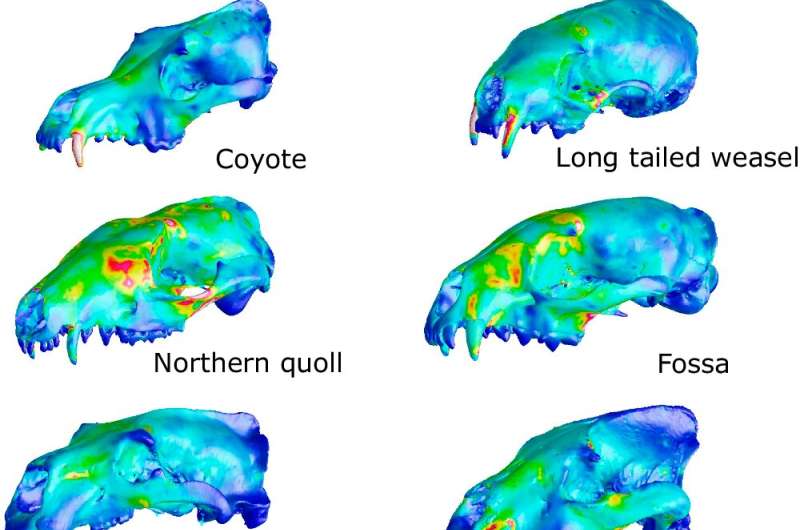This article has been reviewed according to Science X's editorial process and policies. Editors have highlighted the following attributes while ensuring the content's credibility:
fact-checked
peer-reviewed publication
proofread
Study sheds light on the diversity of carnivore skull shapes and their function

In a study published in Nature Communications, a team of international researchers led by Gabriele Sansalone and Carmelo Fruciano has made a significant discovery about the diversity of skull shapes in carnivores.
The team studied the skulls of 132 different carnivore species, focusing on the trade-off between bite force and bite velocity. In simple terms, some animals have evolved to bite hard, while others have evolved to bite fast. This balance between force and speed is a key factor in how an animal hunts and feeds, and therefore, in its survival and evolution.
The researchers found that the rates of evolution in form (how fast is the evolution of the physical shape of the skull) are not directly linked to the rates of evolution in function (how fast the evolutionary change is in how the skull is used for biting). They discovered that skull shapes optimizing for speed are more diverse, while a much smaller range of shapes optimize for force.
This finding suggests that there may be many more ways to evolve a fast bite, but fewer ways to evolve a powerful one. As a result, species that prioritize bite force may be less common, simply because they are less likely to evolve. This could help understand the general question of why some groups of animals are more variable than others.
The team's findings highlight the complexity of evolution and the subtle interplay of form and function in shaping the natural world. They also underscore the importance of trade-offs, a concept that is widely applicable across the tree of life.
This study was made with contributions from researchers at institutions from Italy (Institute for Marine Biological Resources and Biotechnology of the National Research Council, University of Modena and Reggio Emilia and University of Catania), Australia (the University of New England) and the UK (British Antarctic Survey).
More information: Gabriele Sansalone et al, Unexpectedly uneven distribution of functional trade-offs explains cranial morphological diversity in carnivores, Nature Communications (2024). DOI: 10.1038/s41467-024-47620-x
Journal information: Nature Communications
Provided by Institute for Marine Biological Resources and Biotechnology





















